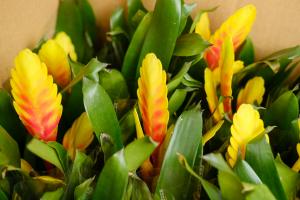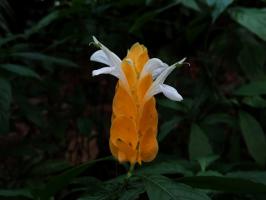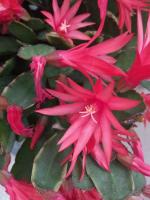1、 Curing method
1. Temperature: it likes high-temperature environment. This habit can be easily seen from its distribution range. Therefore, it is more suitable between 25 and 35 degrees. In addition, it is not cold resistant. It is safer for it to spend the winter above 15 degrees. In addition, pay attention to the temperature difference, which is better around 10 degrees
2. Light: it likes a semi cloudy environment. During its growth period, do not have too strong light, otherwise it will lead to a series of uncomfortable reactions. However, in winter, the sunshine will not be too strong, so there is no need for shade

3. Watering: Dendrobium drumstick likes the environment with high humidity. When the growth rate is relatively fast, we must always maintain the humidity of the substrate. In sunny days with high temperature and relatively dry, some water needs to be sprayed in time
4. Fertilization: Dendrobium drumstick prefers fertilizer. Generally speaking, it can be applied once a week. Fully diluted liquid fertilizer can be used, and the concentration shall not be too high

2、 Breeding skills
1. Reproduction: ramet method can be used. In this way, it is necessary to select a large, robust and dense plant as the mother plant. When the flowering period is over, they can reproduce. Take it out of the basin and tidy up the roots. From here, it can be divided into several parts. When planting, first put a part of the soil, then put the plants in, then fill and further compact
2. Change basin: try once a year or twice a year. The pot can also be changed after flowering, that is, root propagation can be carried out together. It can also be carried out directly in spring, that is, when the new buds haven't grown yet. After changing the basin, place it in a cool place

3、 Diagnosis and treatment problems
1. Diseases: the main diseases include "anthrax" and "powdery mildew", which can be treated with chlorothalonil, and the diseased leaves and other infected parts need to be cut off in time
2. Insect pests: mainly "red spider", "scale insect" and so on. They usually appear in groups and reproduce at a very fast speed, so they need to be sprayed in time

4、 Other issues
1. Toxicity: it is non-toxic and can also be used as medicinal materials
2. Whether it can be raised at home: it is quite suitable to put it at home. It can not only watch, but also purify the surroundings, but it has high requirements for temperature

 jackfruit
jackfruit snake plant
snake plant hibiscus
hibiscus hydrangea
hydrangea lavender
lavender Green roses climb al...
Green roses climb al... If you don't pay att...
If you don't pay att... Management of four g...
Management of four g...



































